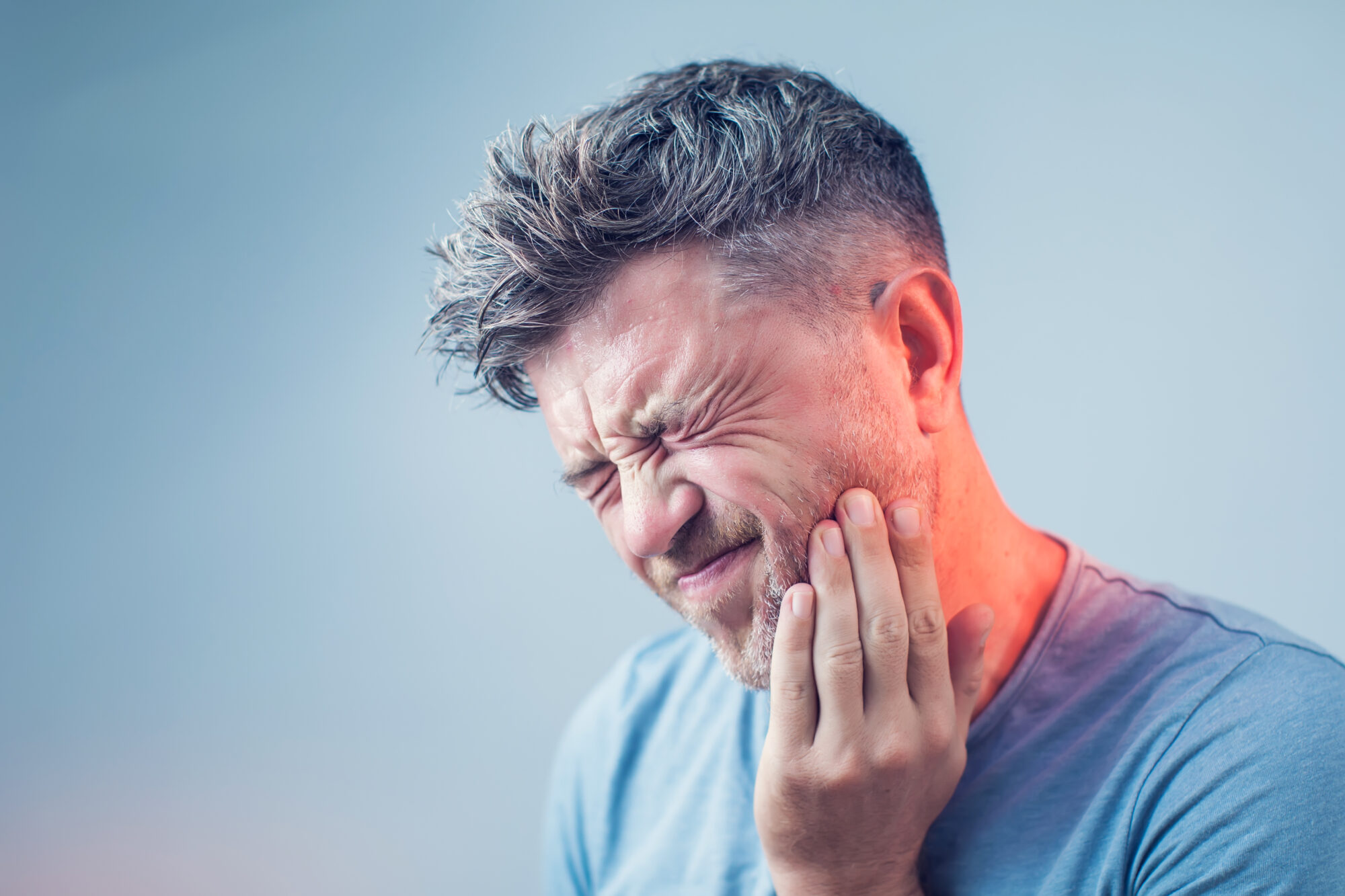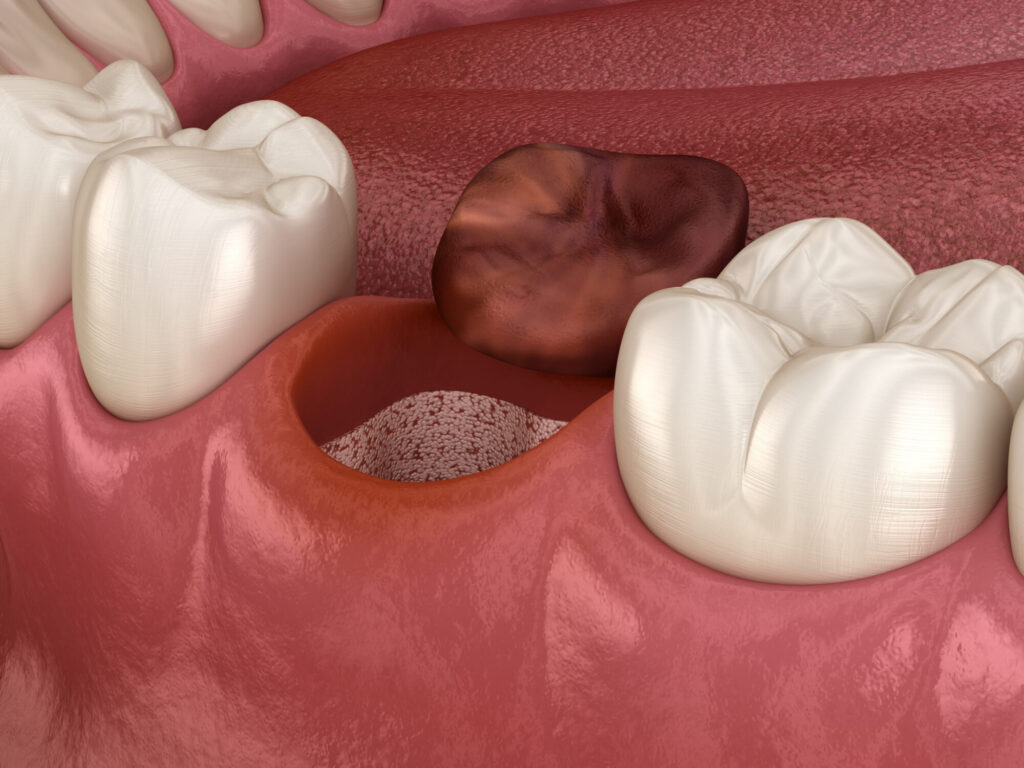
More than 85% of Americans will need to have a tooth extracted at some point in their lives. The vast majority of these extractions are the removal of wisdom teeth, followed closely by extractions due to age-related deterioration of the teeth and those due to untreated dental conditions such as cavities or other decay.
While the extraction process is fairly simple and direct complications during the procedure are rare, one complication is very common following extractions: the dreaded dry socket.
If you’ve ever experienced a dry socket, you probably remember excruciating pain radiating from your jaw and into your face and forehead, down your neck, and even into your shoulders and upper back. If you’ve never suffered from a dry socket, you can take our word for it: you don’t want to.
This month, we’ll explore how to prevent a dry socket, and what you can do should one occur.
What Is a Dry Socket?
When a dentist or oral surgeon extracts a tooth, the procedure leaves behind an empty socket in the gum where the tooth used to be. Immediately following the removal of the tooth, the body begins to form a blood clot to protect the now-exposed bone and soft tissues. The clot also contains various compounds that your body produces to help the site heal.
If that blood clot detaches from the extraction site before healing has completed, that’s called a dry socket. Typically, a dry socket will present with one or more of the following symptoms:
- Within 1-3 days of the extraction, severe pain will begin to develop in the jaw and may radiate throughout the entire upper body.
- A foul odor or abnormally bad breath will develop in the mouth.
- A bad taste will develop in the mouth.
When you examine the extraction site, you’ll see that the blood clot is missing and it may look like there’s an empty hole in your jaw. If the extraction was very recent, you may be able to see the bone of your jaw exposed at the bottom of the socket.
While a dry socket is seldom the cause of an infection or further complication, there is a small likelihood that a dry socket will lead to more serious complications. Even without the risk of more severe damage, though, the pain of a dry socket is extreme.

How To Prevent a Dry Socket
There are several things you can do following a tooth extraction to help reduce the risk of developing a dry socket:
Manage Your Pain and Inflammation
Cold packs or ice on the side of your face on the first day after the extraction can reduce swelling and inflammation at the extraction site. It can also reduce the likelihood of the clot detaching and leaving you with a dry socket.
Limit Your Activity
Especially during the day of the extraction, limiting your activity can reduce the risk of a dry socket. You should be especially careful of high-impact activities like running or other vigorous exercise that can cause the clot to work loose. Follow your dentist’s or oral surgeon’s guidance on resuming activity following the extraction.
Watch How You Drink
Drink plenty of water to help keep you (and that important blood clot) properly hydrated. Avoid drinking hot beverages, alcohol, or drinks with a lot of caffeine while your extraction heals. Above all, avoid drinking through a straw – the suction created in your mouth when you sip through a straw is more than enough to pull the clot free from your extraction site.
Eat Soft Foods
Your dentist or oral surgeon will recommend a soft diet for a few days following the procedure. Make sure to adhere to that diet of things like yogurt and applesauce for as long as recommended. When you do transition back to solid foods, avoid crunchy foods (like popcorn, nuts, or potato chips) and foods that require a lot of chewing (like jerky, taffy, or dried fruit) until your extraction site has healed.
Limit Tobacco Use
Do not smoke, chew, or dip tobacco for at least 48 hours after your procedure. View this as an opportunity to quit a habit that has been proven to shorten your lifespan and increase your chances of serious, life-threatening illness.
Keep Your Mouth Clean
While your mouth heals, you can continue to brush your teeth, but you must avoid brushing at the extraction site. When you rinse your mouth, always do so gently and don’t spit out rinse water forcefully. Several times a day, rinse your mouth with a salt solution of ½ teaspoon of salt in an 8-ounce cup of warm (not hot!) water.
What to Do if You Get a Dry Socket
If you begin experiencing any of the symptoms above, contact your dentist or oral surgeon. They can take several measures to reduce the pain and get you back on the road to healing. They may:
- Flush the socket to remove any bits of food or other foreign matter that may have gotten lodged in the socket
- Prescribe strong painkillers to reduce the intense pain of a dry socket
- Pack the socket with medicated gel and apply a special dressing to provide immediate pain relief
- Provide you with special tools that allow you to rinse out the socket and keep it clean while it heals
Athens Oral Surgery Is Your Local Oral Surgeon With More Than a Decade of Experience.
Dr. Tomlinson and his team can perform any necessary extractions and provide you with excellent aftercare instructions to help you avoid dry socket or comprehensive care in the event that you do develop a dry socket. Schedule an appointment by calling 706-549-5033.
Related Articles:
